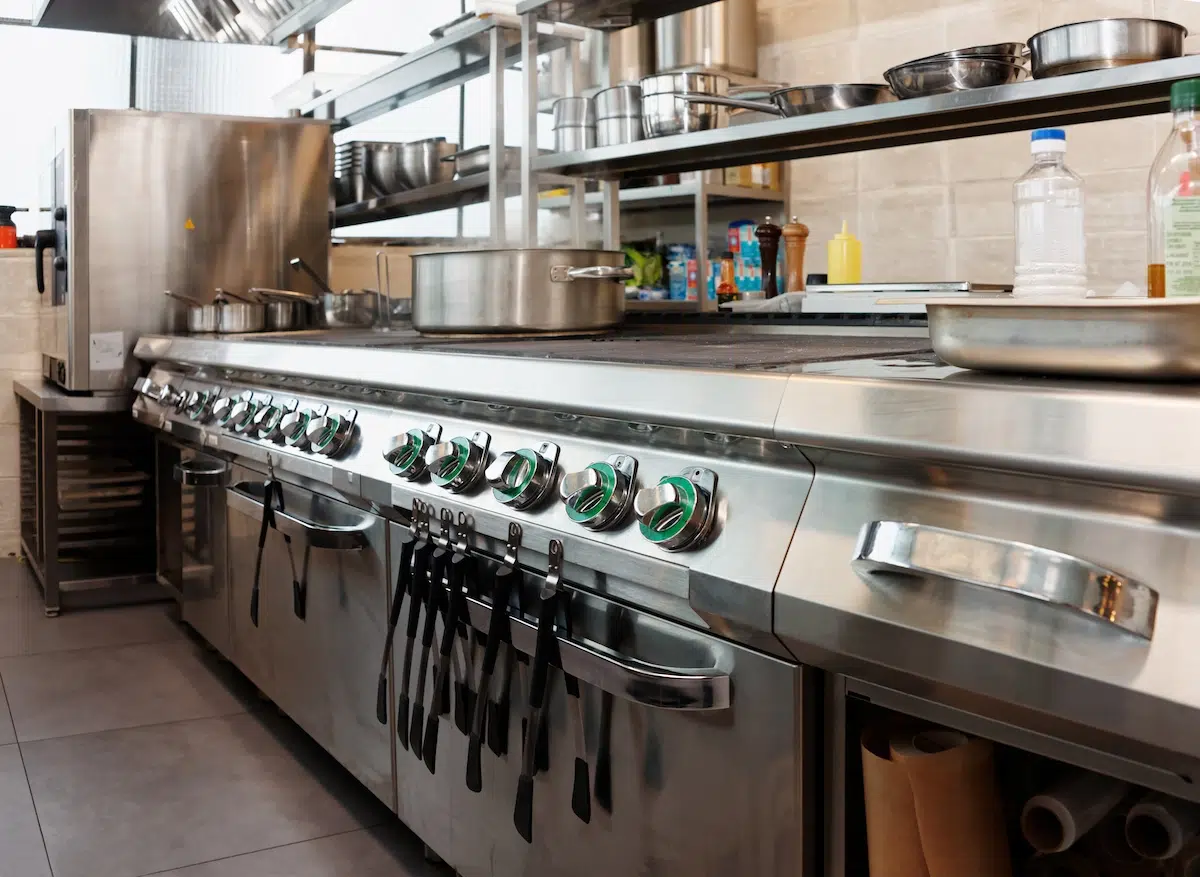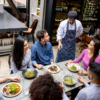The impact that COVID-19 has had on restaurants and businesses has been costly. As the time comes for on-premise dining to return, your cleaning actions need to be doubled down on. This is to reinforce the safety of your associates and customers.
This is the time, more than ever, to learn how to sanitize your restaurant and the best practices to do so. Cleaning and sanitizing are both essential tasks but are different from each other.
The Importance of Sanitizing
So what’s the difference between cleaning versus sanitizing? According to ServSafe, “Cleaning removes food and other types of soil from a surface such as a countertop or a plate. Sanitizing reduces the number of pathogens on the clean surface to a safe level.”
These both go hand in hand and are essential in the back of the house and in front of the house.
When sanitizing correctly, you can kill 99% of bacteria, fungi, and some microbes. You must mix sanitizing solutions at a certain concentration level and leave it on surfaces for at least 60 seconds.
First you clean, then sanitize, then finally, disinfect. Disinfecting kills bacteria and viruses, but it must be done right to be effective. It is recommended that disinfectants must stay in contact on a surface for 10 minutes.
To be effective while cleaning and sanitizing, you must follow this five-step process:
1. Scrape or Remove Food From the Surface
This is the key first step to preventing the spread of food in further steps. It’s better to use a disposable paper towel or cloth to absorb liquids and food particles.
2. Wash the Surface
Use a safe cleaning solution to help dissolve any leftover food residue and dirt. Do this with a chemically treated disposable wipe to limit the growth of odor-causing bacteria.
3. Rinse the Surface
Rinse the surface with water to remove the cleaning solution. This is a necessary step because cleaning solutions are not compatible with sanitizers. If mixed, the sanitizer will not work.
4. Sanitize the Surface
This step gets rid of all the leftover invisible germs. Sanitizing reduces the risk of cross-contamination and the spread of viruses. This step is often overlooked and it is the most important.
Normally, restaurants will use chlorine or quaternary-based sanitizer. Then it is best to use a disposable wipe that can spread the sanitizer on the surface. A paper towel or cloth is not ideal for this task as it will absorb the sanitizer. Instead, you want to leave it on the surface for enough time to kill pathogens.
5. Allow the Surface to Dry
Most people in the restaurant industry know that this is a time-consuming task but it’s a must. Allowing the sanitizer to air dry for at least 60 seconds, it can kill the germs it comes into contact with. The time to allow the surface to dry is well worth the wait to ensure the safety of your customers and staff.
During this time, extra measures need to be put into place to continue proper sanitation. The cleaning doesn’t end once these steps are finished.
Extra Measures to Take
Do you know when it’s the proper time to clean and sanitize? In a restaurant, everything needs to always remain clean. But, once a surface has come into contact with food, it needs to be cleaned and sanitized.
To ensure that your restaurant is properly cleaned, check out this checklist. It includes daily, weekly, monthly, and even annually cleaning projects.
Each shift shares responsibility for keeping the restaurant clean. With this checklist, you can make sure there’s no gap in cleanliness.
Here are three tips to ensure clean and sanitary food-contact surfaces:
1. Reinforce the Need for Vigilant Cleaning and Sanitizing Practices
Sanitizing is essential for preventing the spread of pathogens from equipment to food. All equipment needs to be cleaned and sanitized after each use.
This includes sanitizing surfaces after contact with different foods. After touching raw vegetables or meats, you must sanitize that surface. Even if you are interrupted in the middle of the task, it’s best to start fresh and sanitize what you were working on.
It’s important to know that cleaning and sanitizing are different, but both are essential.
2. Review Your Cleaning and Sanitizing Products
The cleaning solutions in your restaurant need to be stable, noncorrosive, and safe to use. Make sure to follow the manufacturer’s instructions and your local regulatory requirements.
3. Train Your Staff When to Clean and Sanitize a Food-Contact Surface
Food-contacted surfaces need to be cleaned after each use. This includes utensils and equipment after the use of different types of foods. If these items are in constant use, you must clean and sanitize at least every four hours.
Another tip to put in place in your restaurant is color-coding cleaning towels. Certain colored towels for different cleaning tasks will allow for less cross-contamination. You can also have different ones for the front of the house versus the back to look better to your customers.
Sanitizing your restaurant from within starts with what you do before work. Proper hygiene and correct handwashing can help reduce cross-contamination in your restaurant.
Hygiene starts before coming to work and it’s an essential action to protect ourselves. Showering before work and wearing clean clothes can support cleanliness in the restaurant.
Something that is often overlooked is the importance of regularly washing your hands. Wash your hands before coming into contact with any food or food-related tasks. Scrub and wash for 20 seconds after touching anything that could increase cross-contamination.
List of helpful resources:








